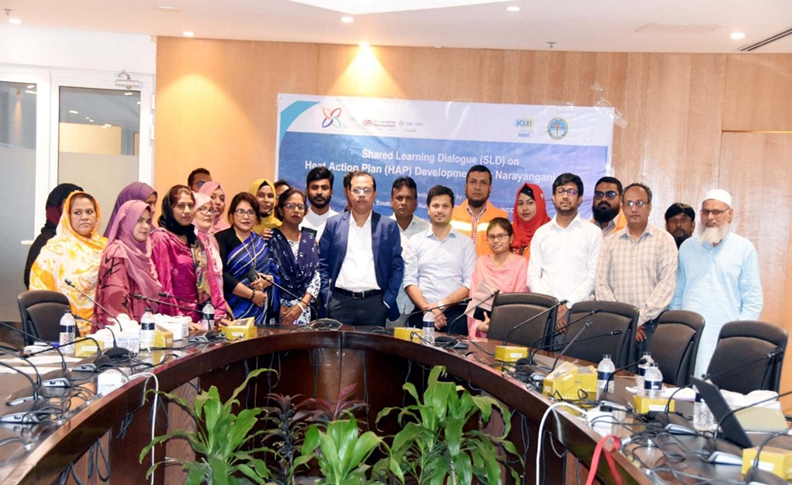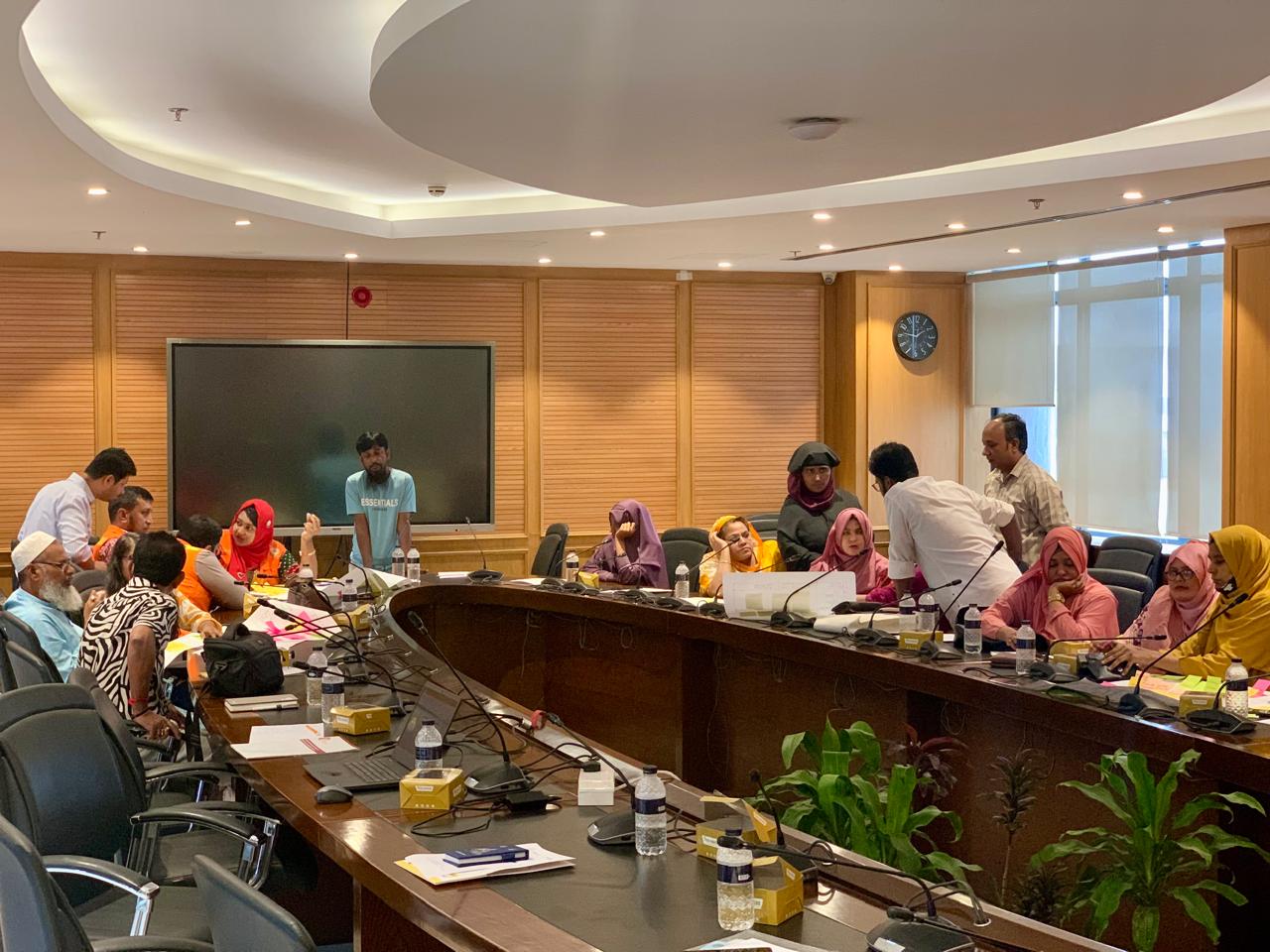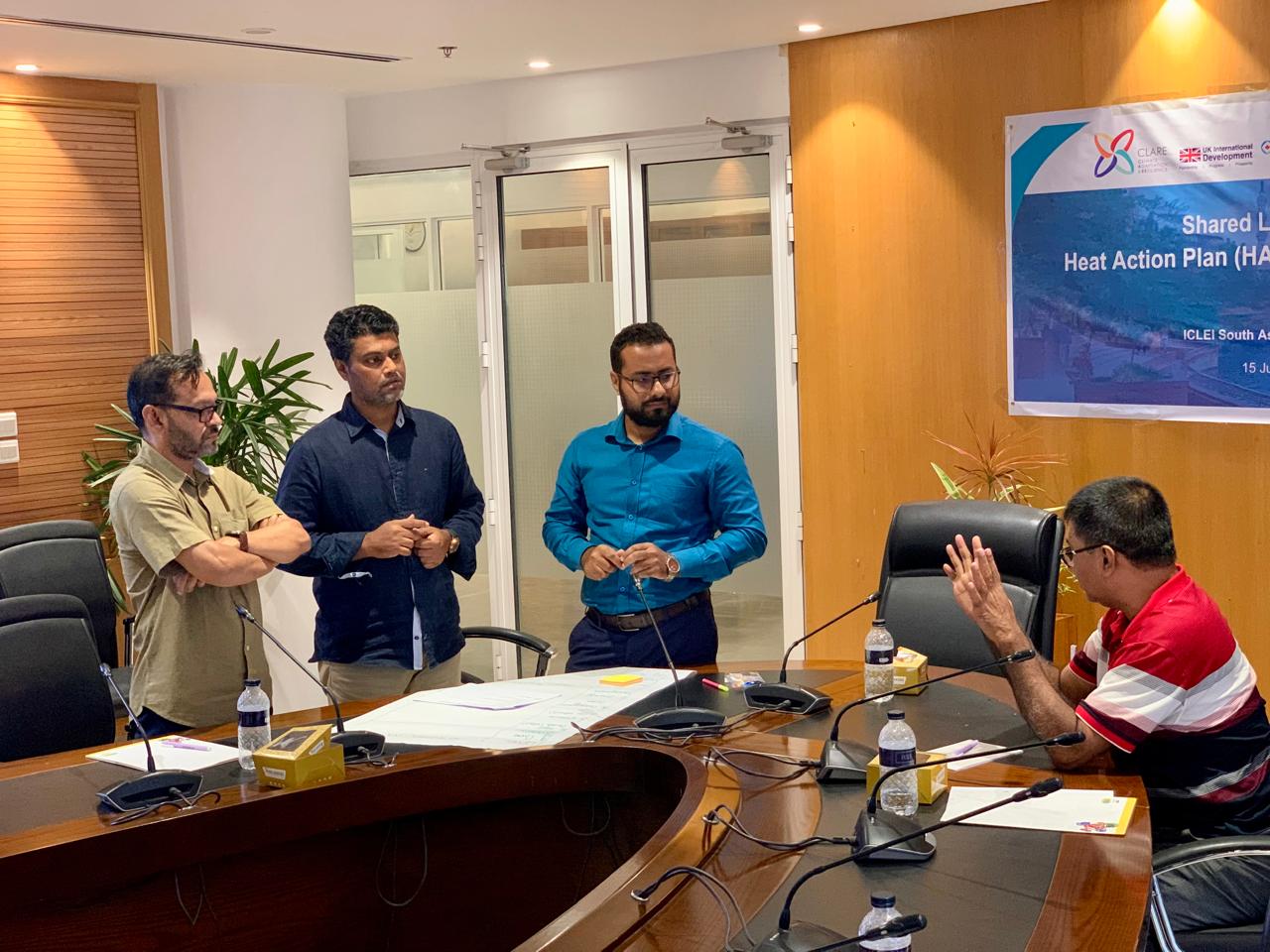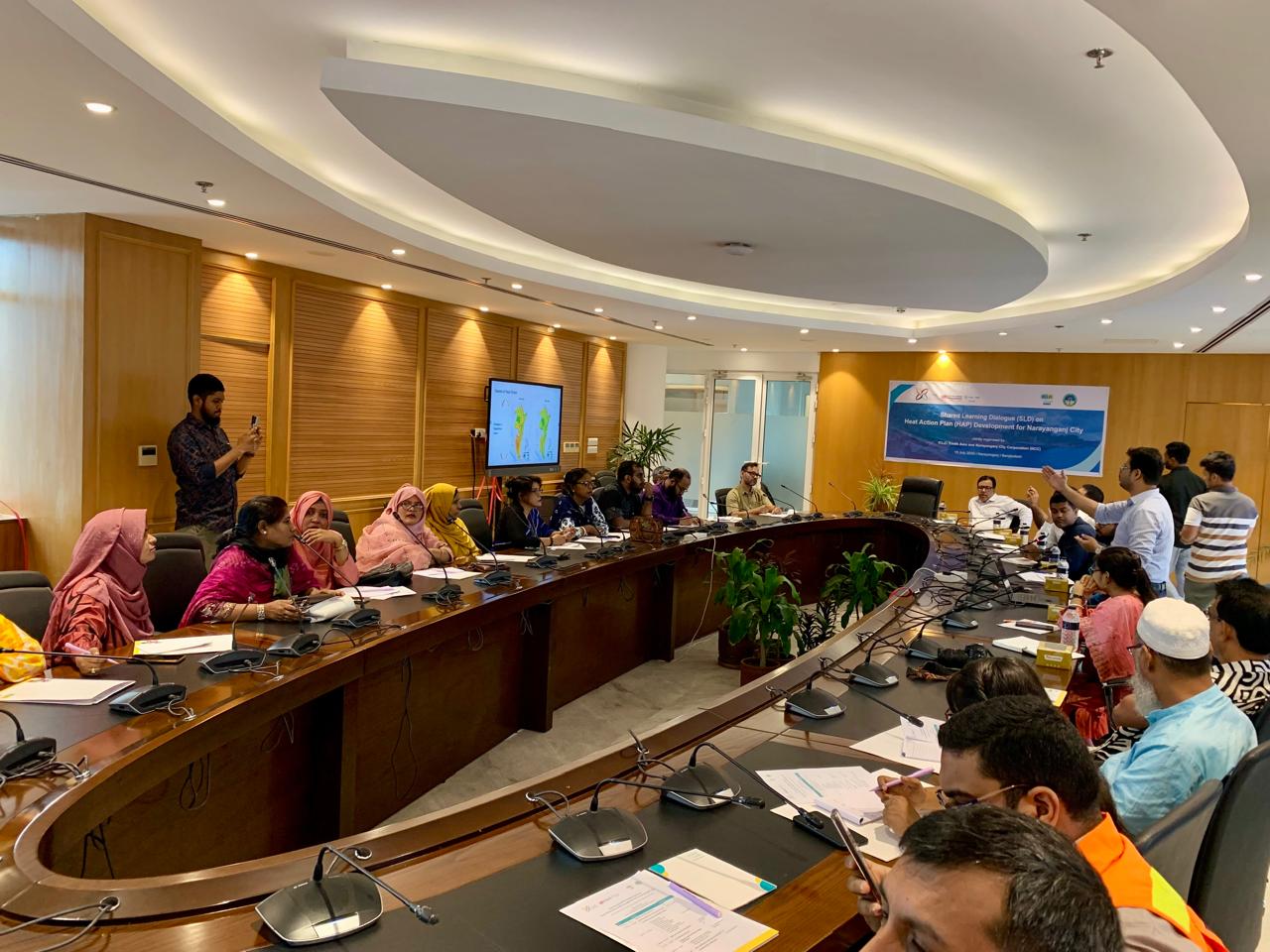Advancing Heat Action Plan (HAP) in Narayanganj City Corporation under the CLARE Programme

Following an inception meeting in November 2024, the Narayanganj City Corporation (NCC), in collaboration with ICLEI South Asia, hosted a Shared Learning Dialogue (SLD) to advance the development of Bangladesh’s first city-level Heat Action Plan (HAP) on 15 July 2025. ICLEI South Asia is offering technical support to Narayanganj in preparing its Heat Action Plan project as a part of the Climate Adaptation and Resilience (CLARE) Research for Impact Opportunities Fund initiative, a UK-Canada framework research programme funded by the United Kingdom’s Foreign, Commonwealth and Development Office (FCDO) and Canada’s International Development Research Centre (IDRC).
The Heat Action Plan builds upon the foundation established by Narayanganj’s Climate Resilient City Action Plan (CRCAP), developed by ICLEI South Asia in 2021. The CRCAP identified heat stress as a critical and growing challenge for the city, making the development of a dedicated HAP a natural progression in advancing Narayanganj’s climate adaptation agenda. The HAP is closely aligned with Bangladesh’s national strategies, including the Bangladesh Delta Plan 2100—a long-term, integrated framework aimed at ensuring climate-resilient and sustainable development of the delta region through effective water and land management, and the National Adaptation Plan 2023–2050, a comprehensive roadmap to strengthen climate resilience across all sectors of the country.
The workshop aimed to introduce the HAP framework, present technical insights on heat stress, and engage local stakeholders to co-develop solutions for protecting vulnerable communities in Narayanganj from extreme heat stress and the Urban Heat Island effect. The event witnessed active participation from 48 representatives (33 male, 15 female) across multiple sectors, including the Bangladesh Meteorological Department, UN-Habitat, Rajdhani Unnayan Katripakkha (RAJUK), ICLEI South Asia’s Bangladesh team, Community Development Committee, Urban Community Volunteers, media representatives, and architectural firm Nirman Upodeshta. In his opening remarks, Mohammad Zakir Hussain, Chief Executive Officer of NCC, emphasised that global warming and extreme heat events have become urgent challenges for urban areas. He underscored the importance of taking proactive measures before the onset of peak summer months, noting that waiting to respond after heat impacts are felt would be insufficient and far less effective in protecting vulnerable communities. Md Moinul Islam, Urban Planner at NCC and designated focal person for the Heat Action Plan from the institution, stressed the urgent need for cross-sectoral coordination and collaborative action among government agencies, communities, and stakeholders to effectively address the city’s vulnerability to extreme heat.
ICLEI South Asia delivered a comprehensive overview of the HAP initiative at the technical session and outlined technical insights of the Heat Action Plan. The team emphasised the importance of integrated and participatory planning approaches to effectively build adaptive capacity in secondary cities such as Narayanganj, where climate vulnerabilities are increasingly pronounced. Utilising the City Heat Resilience Toolkit and insights from over 800 community respondents across 27 wards, the plan revealed alarming trends such as declining vegetation, shrinking water bodies, and increasing heat-related illnesses.
The interactive session facilitated a problem-tree analysis, allowing participants to identify and address root causes, effects, and short, medium, and long-term interventions such as awareness and plantation drives, infrastructure maintenance, alternative livelihoods, food and water security, and climate-resilient urban planning for managing urban heat. The session also served as a platform for validating the technical findings shared earlier and enriching them with additional insights and locally relevant strategies from diverse stakeholders. This collective effort ensured that the resulting HAP would be grounded in practical realities and tailored to the city’s unique vulnerabilities and capacities.
At the plenary discussion, stakeholders from the government, civil society, media, and development agencies shared their perspectives on institutional responsibilities, policy gaps, and immediate next steps. Participants highlighted the need for sustained coordination, resource mobilisation, and adaptive planning across city systems.
Emphasising the need for integrating nature-based solutions into urban planning, Asaduzzaman Paris, Urban Planner at the UN-Habitat, said, “As we look toward building a heat-resilient Narayanganj, I strongly advocate for the integration of nature-based solutions into urban planning. These approaches not only enhance climate resilience but also contribute to healthier, more livable spaces. Additionally, promoting energy-efficient building practices across the city is essential for reducing heat stress and ensuring long-term sustainability.”
Participants highlighted the importance of broadening the institutional base for effective emergency response and recommended including additional local institutions, civil society groups, non-governmental organisations (NGOs), and community-based networks to enhance coordination, outreach, and service delivery during heat-related emergencies.
The Heat Action Plan is expected to be a critical tool for building urban resilience, and the Shared Learning Dialogue marked a significant step in advancing participatory planning in Narayanganj. It underscored the importance of proactive action, inclusive governance, and strategic investment to build heat resilience, especially for vulnerable groups.
As the next step, ICLEI South Asia will consolidate the SLD outcomes into a draft HAP, which will be reviewed and validated by the NCC council before formal adoption. The draft plan is expected to be submitted by August 2025.







